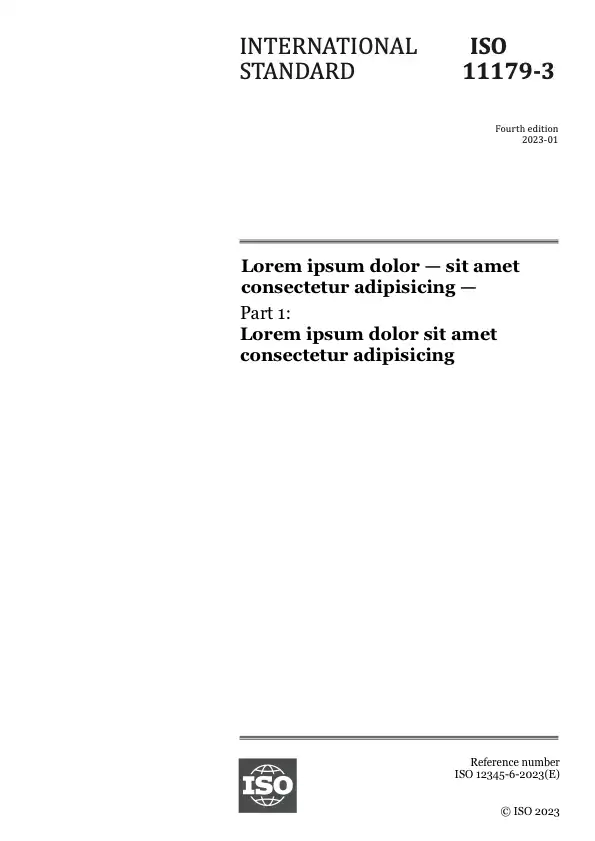Résumé
This document provides a general framework for improving the quality and comparability of methods for assessing the contribution of civil engineering works and their related external works to sustainable development based on a life cycle approach.
This document aims to bridge the gap between regional and national methods for the assessment of the sustainability performance of civil engineering works by providing a common framework for their expression.
This document identifies and describes issues to be taken into account in the development and use of methods for the assessment of the sustainability performance for all types of civil engineering works, both new and existing, and it is relevant for the assessment of the environmental, social and economic performance of both new and existing civil engineering works over their entire life cycle.
The object of assessment in this document is the civil engineering works itself and its area of influence.
NOTE 1 For example, the assessment includes any local civil engineering works beyond the immediate area of the civil engineering works; the transportation of the users of the civil engineering works; and the use and exploitation of the civil engineering works itself.
Assessments can be undertaken either for the whole civil engineering works, for a part of the civil engineering works, or for a combination of several civil engineering works.
This document excludes environmental, social and economic risk assessment, but the results of a risk assessment can be taken into consideration.
This document is intended to be used in conjunction with, and following the principles set out in, ISO 15392 and the ISO 14000 family of International Standards.
The evaluation of technical and functional performance of the civil engineering works is outside the scope of this document, but the technical and functional characteristics are considered within this framework by reference to the functional equivalent. The functional equivalent takes into account the technical and functional requirements and forms the basis for comparisons of the results of the assessment.
Assessment methods that consider only one or two of the three dimensions of sustainability are outside the scope of this document.
This document does not set benchmarks or levels of performance relative to environmental, social and economic aspects and impacts.
NOTE 2 Valuation methods, levels, classes or benchmarks can be prescribed in the requirements for environmental, social and economic performance in the client's brief, construction regulations, national standards, national codes of practice, civil engineering works assessment and certification schemes, etc.
The rules for methods of assessment to consider in the assessment of environmental, social and economic aspects of operation practices are included within this framework, and the consequences of decisions or actions that influence the environmental, social and economic performance of the object of assessment are identified so that they can be taken into account.
Prévisualiser
Informations générales
-
État actuel: PubliéeDate de publication: 2019-05Stade: Norme internationale en cours d'examen systématique [90.20]
-
Edition: 1
-
Comité technique :ISO/TC 59/SC 17
- RSS mises à jour
Cycle de vie
-
Actuellement
PubliéeISO 21931-2:2019
Les normes ISO sont réexaminées tous les cinq ans
Stade: 90.20 (En cours d'examen)

Cette norme contribue aux Objectifs de développement durable suivants
Vous avez une question?
Consulter notre FAQ
Horaires d’ouverture:
De lundi à vendredi - 09:00-12:00, 14:00-17:00 (UTC+1)
